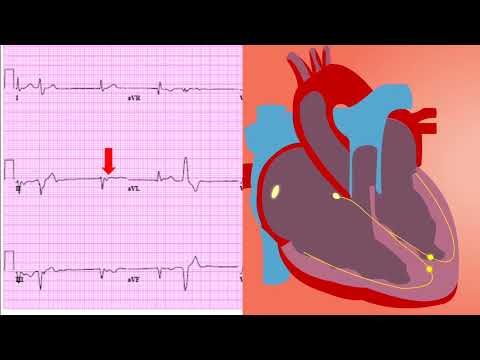🎬 Video Summary
This video provides a concise overview of atrial fibrillation (AFib), a common heart condition. Learn about the ECG characteristics of AFib and its potential link to heart failure. This video is a valuable resource for medical professionals, students, and anyone interested in understanding AFib and its impact on heart health.
🧠Teaching Pearls
- 💡 Atrial fibrillation (AFib) is characterized by rapid, irregular atrial activity.
- 💡 Irregularly irregular rhythm on ECG is a key indicator of AFib.
- 💡 AFib can increase the risk of stroke and other complications.
- 💡 Understanding AFib is crucial for effective diagnosis and management.
- 💡 ECG interpretation is essential for identifying and managing heart conditions like AFib.
❓ Frequently Asked Questions
Q: What are the main symptoms of atrial fibrillation?
A: Common symptoms include palpitations, shortness of breath, fatigue, and lightheadedness. However, some people may experience no symptoms at all.
Q: How is atrial fibrillation diagnosed?
A: Atrial fibrillation is typically diagnosed through an electrocardiogram (ECG), which records the electrical activity of the heart.
Q: What are the treatment options for atrial fibrillation?
A: Treatment options include medications to control heart rate and rhythm, blood thinners to prevent blood clots, and procedures like cardioversion or ablation.
Q: What is the connection between atrial fibrillation and heart failure?
A: AFib can contribute to heart failure by causing the heart to beat inefficiently over time. Conversely, heart failure can also increase the risk of developing AFib.
Q: Can atrial fibrillation be cured?
A: While a complete cure isn’t always possible, treatment can effectively manage symptoms and reduce the risk of complications.
Q: What lifestyle changes can help manage atrial fibrillation?
A: Lifestyle changes such as maintaining a healthy weight, exercising regularly, managing blood pressure, and avoiding excessive alcohol and caffeine can help manage AFib.
🧠 Key Takeaways
- 💡 Recognize the ECG characteristics of atrial fibrillation.
- 💡 Understand the link between AFib and potential heart failure.
- 💡 Identify key risk factors and management strategies for AFib.
- 💡 Learn how ECG interpretation is crucial for AFib diagnosis.
- 💡 Gain a better understanding of AFib’s impact on overall heart health.
🔍 SEO Keywords
Atrial fibrillation, AFib, ECG interpretation, heart failure, irregular heartbeat, cardiology, ECG diagnosis.
“`

